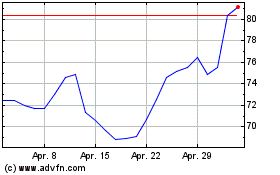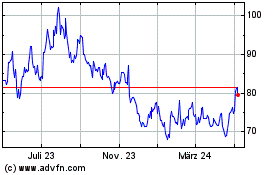Why Chinese ADRs and Stocks Are Tanking This Week?
28 Oktober 2022 - 7:10PM
Finscreener.org
Chinese stocks experienced a
sell-off earlier this week after the country’s President Xi Jinping
tightened his grip on the country. The Invesco
Golden Dragon China ETF (NYSE:
PGJ) fell by 14.5% on October 24 and is trading at
its lowest level since 2009.
Alibaba (NYSE:
BABA) shares are currently priced at $63,
significantly below its all-time high of $310. In fact, shares of
the Chinese tech giant were listed at $68 on the NYSE back in 2014.
Other heavyweights such as Baidu
(NASDAQ: BIDU), Pinduoduo
(NASDAQ: PDD), and Nio (NYSE:
NIO) all reported double-digit percentage
declines on Monday.
It seems the risk premium of
China has increased among investors after Jinping bagged a third
term as the leader of the Communist Party. The Chinese premier has
reportedly stacked the party with loyalists increasing the
uncertainty of future economic policies.
Jinping’s zero COVID-19 policy
and the recent crackdown on tech companies, as well as underlying
tension with Taiwan, have all contributed toward the sell-off. In
the last three years, China has tightened regulations on several
tech companies ranging from areas of data protection and the way in
which algorithms are used.
China continues to impose
lockdowns in several provinces to keep COVID-19 cases in check.
This, in turn, has resulted in global supply chain disruptions and
lower manufacturing numbers. Comparatively, several other countries
are relaxing pandemic-related restrictions drastically and
reopening borders once again.
Due to the lack of transparency
surrounding Chinese stocks and ADRs, several market participants
now believe these companies to be uninvestable.
Are Chinese stocks undervalued or a value
trap?
The ongoing sell-off presents
investors with an opportunity to buy the dip. Companies that were
once trading at a premium are available at cheap valuations.
Further, China is the world’s second-largest economy, the biggest
EV market globally, and one of the fastest-growing e-commerce
markets, making it a top bet for those with a high-risk
profile.
Marko Kolanovic, a
JPMorgan (NYSE:
JPM) strategist, believes the sell-off in Chinese
stocks is not connected to their fundamentals and presents a buying
opportunity right now. For example, the shares of Pinduoduo and Nio
are trading at attractive valuations. Let’s see how.
In Q2 of 2022, sales of
Pinduoduo, a China-based e-commerce company, increased its sales by
36% year over year to $4.7 billion, above analyst estimates of
$3.45 billion. Its adjusted earnings per share more than doubled to
$1.13 per share, compared to estimates of $0.41 per
share.
Pinduoduo has grown its top line
at the fastest rate in three quarters in Q2. It generated 80% of
sales from the online marketing services business, where the
company charges fees from merchants to list products on its
marketplace. Around 20% of revenue comes from transaction-related
services.
Valued at a market cap of $67
billion, PDD stock is valued at 4x forward sales and 18x forward
earnings. Despite a challenging environment, analysts expect
Pinduoduo to increase sales by 20.9% to $17 billion in 2022 and by
23.3% to $20.92 billion in 2023. Its adjusted earnings are forecast
to increase from $3.53 per share in 2023 to $1.43 per share in
2021.
Is Nio stock a buy right now?
In the
last 15 months, Nio has been wrestling with higher input costs,
chip shortages, and lower production numbers (due to lockdowns),
driving the stock lower by 84% from all-time
highs.
However, Mizuho analyst Vijay
Rakesh has a 12-month price target of $40 for Nio, indicating an
upside of 300% from current levels. Rakesh is optimistic about
robust demand for Nio’s portfolio of electric vehicles and China’s
push towards
clean energy solutions.
Valued at a market cap of $17
billion, Nio stock is priced at two times forward sales. While
still unprofitable, Nio is forecast to narrow its loss per share
from $1 in 2021 to $0.21 in 2023.
Alibaba (NYSE:BABA)
Historical Stock Chart
Von Mär 2024 bis Apr 2024

Alibaba (NYSE:BABA)
Historical Stock Chart
Von Apr 2023 bis Apr 2024
